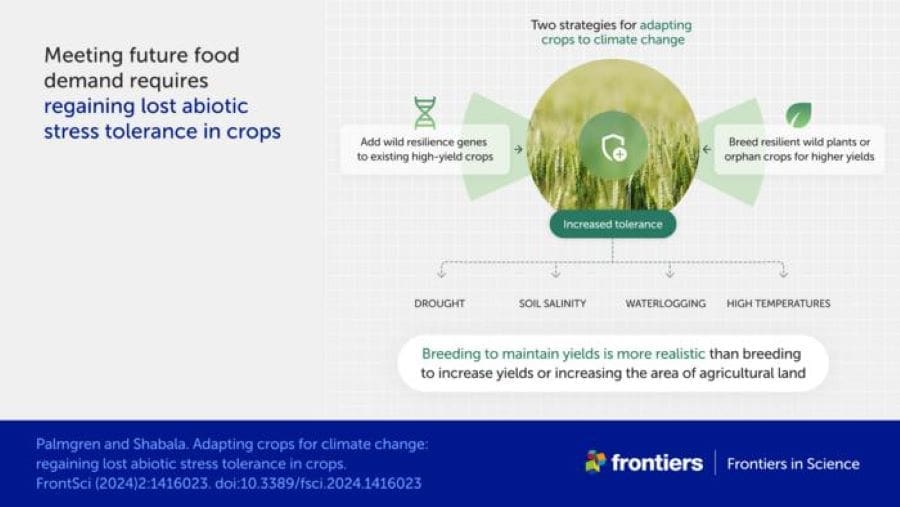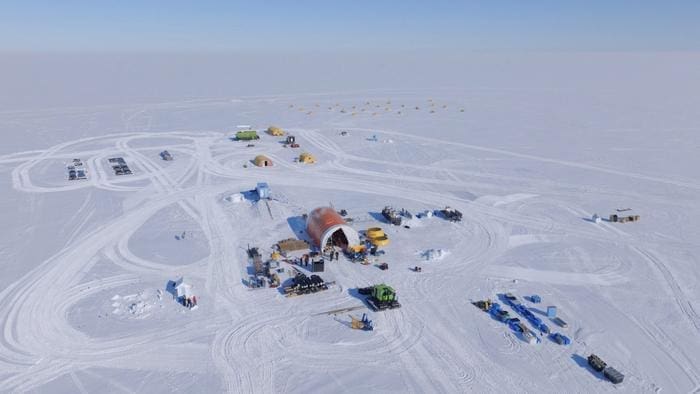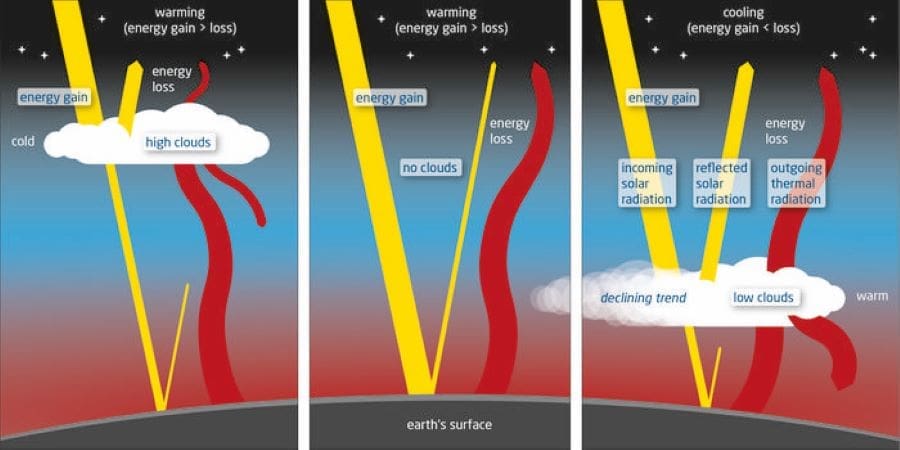Gene editing and plant domestication essential to protect food supplies in a worsening climate, scientists say
Colm Gorey | Frontiers – We all need to eat, but the impact of the climate crisis on our crops is throwing the world’s food supply into question. Modern crops, domesticated for high food yields and ease of harvesting, lack the genetic resources to respond to the climate crisis. Significant environmental stresses are reducing the amount of food produced, driving supplies down and prices up. We can’t sustainably take over more land for agriculture, so we need to change our crops – this time to adapt them to the world we have altered.
“Agriculture is highly vulnerable to climate change, and the intensity and frequency of extreme events is only going to increase,” said Prof Sergey Shabala of the University of Western Australia, lead author of the article in Frontiers in Science. “Both sustainable agricultural production and global food security will be critically dependent on our ability to create climate-resilient crops.”
Feed the world?
Our current agricultural system produces very large amounts of food through the intensive use of fertilizers and high-production monocultures. This has absorbed the demands of our global population for decades, but we now recognize it as unsustainable. The fertilizers we are reliant on damage the environment when they are produced and pollute the environment when they are used. At the same time, due to the stresses caused by the climate crisis, key staple crops are producing less food.

Even if droughts don’t kill plants, high temperatures lower the yield. To overcome this, farmers irrigate their crops – but irrigation water usually has a high salt content, because freshwater is too much in demand. This raises the salinity of the soil, which lowers the yield of most crops that grow in it. Finally, flooding caused by extreme weather events leaves plants standing in water, creating hypoxic conditions that stop plants absorbing oxygen through their roots. This also lowers the yield of most plants.
“The problem of a sustainable diet has scientific, social, and political facets,” said Shabala. “A broader acceptance of novel technologies and a willingness to accept some cultural shifts is needed. A good example may be rice: it is a main staple food for a high percentage of the population, but many parts of the world may become unsuitable for its production. A switch to other, more resilient, crops may be needed, and I am not sure the public is ready to accept it.”
Many wild plants, including the ancestors and relatives of staple crops, are better able to cope with environmental stresses than modern crops. For our crops to survive climate change, we need to reintroduce those resilient traits.
The seeds of success
Shabala and colleague Prof Michael Palmgren from the University of Copenhagen lay out two options. The first is that we could introduce genes which support resistance to environmental stress into existing high-yield crops. This is easier where there is a close relative to borrow genes from, or where the gene remains in the plant’s DNA but has been deactivated. However, many genes contribute to resistance to environmental stress, and including multiple additional novel traits in a new varietal is difficult.
The second option is that we could domesticate wild plants which are resistant to environmental stresses but have lower yields than modern crops. This has been successful in comparatively simple cases where only small changes need to be made, but it’s unclear whether there are enough simple cases to help assure our food supply.
It’s too early at this point to know which strategy will succeed, the scientists say. However, the same critical elements are essential to the success of both: innovative gene-editing and other precision breeding technologies driven by accurate cell-based phenotyping and public acceptance of the new crops.
“One of the current challenges is to match recent scientific advances with public perception of new technologies,” cautioned Shabala. “The issue is highly politicized and there are significant commercial interests involved. And due to a lack of specific knowledge, the general public cannot distinguish the subtle differences amongst various technologies, and relies on opinions in the media.”
***
This article is part of the Frontiers in Science multimedia article hub ’Adapting crops for climate change’, which also features an editorial and viewpoint from other eminent experts: Dr Malcolm J. Hawkesford (Rothamsted Research, UK), Prof Francesco Loreto (University of Naples Federico II, Italy), and Dr Giulia Atzori (National Research Council (CNR), Italy) – as well as an explainer with infographics.
Journal Reference:
Palmgren Michael, Shabala Sergey, ‘Adapting crops for climate change: regaining lost abiotic stress tolerance in crops’, Frontiers in Science 2 (2024). DOI: 10.3389/fsci.2024.1416023
Article Source:
Press Release/Material by Frontiers
Will the Ross Ice Shelf melt? International team launches second attempt to drill for Antarctic climate clues
Binghamton University – An international team of scientists – including faculty at Binghamton University, State University of New York – is undergoing an ambitious mission to obtain critical geological records from the West Antarctic Ice Sheet.
Associate Professor Molly Patterson is a member of the science leadership team for the current expedition, which will take place during the Antarctic summer; she will co-lead the Crary Ice Stream season during the following year. This season’s “on-ice” team of 27 also includes Brendan Reilly from the Lamont-Doherty Earth Observatory.
The vast ice sheet holds enough ice to raise sea levels by 13 to 16.4 feet if it melts completely. Research has found a collapse might be inevitable for some parts of the West Antarctic Ice Sheet, such as the area around the Thwaites Glacier – also known as the “Doomsday Glacier” – in the Amundsen Sea, due to the presence of warm water. In contrast, water underneath the Ross Ice Shelf – which acts as a buttress to stabilize the inland ice – remains cold.

But will the Ross Ice Shelf melt? And, if so, when? Scientists, drillers and Antarctic field specialists from 13 countries have come together as part of the Sensitivity of the West Antarctic Ice Sheet to 2°C (SWAIS2C) of warming project to find those answers.
“The international partnership supporting this project really highlights how we can try to address some of the most pressing and challenging science questions related to the impacts of global change that will impact society,” said Patterson, co-chief scientist of SWAIS2C.
The mission, which takes place during the Antarctic summer, is challenging. Researchers are seeking insights contained in sediment layered on the seafloor under the Ross Ice Shelf. To access it, they must melt a hole through around 580 meters of ice, pass through a 55-meter ocean cavity, and use a custom-designed drilling system to retrieve a sediment core 200 meters deep in the seabed.
Last year, the attempt failed after reaching the seafloor due to technical difficulties. It was the first-ever attempt to obtain a geological record that deep so far from a base – around 700 miles – and so close to the center of the West Antarctic Ice Sheet, said co-chief scientist Richard Levy from GNS Science and Te Herenga Waka-Victoria University of Wellington, New Zealand.
The rocks and mud in the core will reveal how the ice sheet behaved during the last interglacial period 125,000 years ago when the Earth was around 1.5° C warmer than pre-industrial temperatures – similar to temperatures this year due to human-caused climate change. If the researchers find marine algae, indicating open ocean conditions, it’s likely that the ice sheet retreated.
The team calls SWAIS2C “the discovery for our lifetime” and hopes the results will guide plans to adapt to unavoidable sea-level rise while amplifying the imperative to mitigate global greenhouse gas emissions.
“Retrieving this sample from such a remote location will help us build a much clearer picture of how the West Antarctic Ice Sheet will respond to future warming, which parts will melt first, and which parts will remain. We’re using the past to help prepare for our future,” said co-chief scientist Tina van de Flierdt from Imperial College London.
Article Source:
Press Release/Material by Binghamton University
Climate change threatens global biodiversity, with extinction risks escalating at higher temperatures
AAAS – Climate change is driving global extinction risks, with 1.6% of species threatened at 1.3°C of warming and risks escalating to 29.7% at 5.4°C, according to a new meta-analysis encompassing more than 30 years of research.
Climate change is reshaping ecosystems and biodiversity globally, altering species distributions, interactions, and population dynamics. While some species adapt or migrate to track shifting climates, others face population declines, shrinking ranges, and potential extinction. Recent global biodiversity assessments forecast extinction risks for over a million species, though the specific contribution of climate change to these predictions remains unclear.
Effective conservation efforts to protect this biodiversity require an understanding of these risks globally, but to do so requires a comprehensive synthesis of many datasets.
To produce a quantitative estimate of extinctions attributable to climate change, Mark Urban performed a formal meta-analysis that incorporates more than 5.5 million individual projections from 485 studies covering most known species. The author’s analysis greatly advances prior assessments by tripling the number of studies included and leveraging sophisticated modeling approaches that account for species’ sensitivity and adaptability to climate change.
According to the findings, under current global temperatures, which are currently 1.3°C above preindustrial levels, 1.6% of species are expected to face extinction. As temperatures rise to 1.5°C – the Paris Agreement’s target – extinction risks increase to 1.8%, and further to 2.7% at 2.0°C. With international emission targets leading to a projected 2.7°C rise, 1 in 20 species will be at risk.
Beyond this, extinction risks escalate sharply; 14.9% at 4.3°C and 29.7% at 5.4°C. Amphibians; species from mountain, island, and freshwater ecosystems; and species inhabiting South America, Australia, and New Zealand face the greatest threats.
Journal Reference:
Mark C. Urban, ‘Climate change extinctions’, Science 386, 1123-1128 (2024). DOI: 10.1126/science.adp4461
Article Source:
Press Release/Material by American Association for the Advancement of Science (AAAS)
Rapid surge in global warming mainly due to reduced planetary albedo
Alfred Wegener Institute, Helmholtz Centre – Rising sea levels, melting glaciers, heatwaves at sea – 2023 set a number of alarming new records. The global mean temperature also rose to nearly 1.5 degrees above the preindustrial level, another record. Seeking to identify the causes of this sudden rise has proven a challenge for researchers.
After all, factoring in the effects of anthropogenic influences like the accumulation of greenhouse gases in the atmosphere, of the weather phenomenon El Niño, and of natural events like volcanic eruptions, can account for a major portion of the warming. But doing so still leaves a gap of roughly 0.2 degrees Celsius, which has never been satisfactorily explained.
A team led by the Alfred Wegener Institute puts forward a possible explanation for the rise in global mean temperature: our planet has become less reflective because certain types of clouds have declined.
“In addition to the influence of El Niño and the expected long-term warming from anthropogenic greenhouse gases, several other factors have already been discussed that could have contributed to the surprisingly high global mean temperatures since 2023,” says Dr Helge Goessling, main author of the study from the Alfred Wegener Institute, Helmholtz Centre for Polar and Marine Research (AWI): e.g. increased solar activity, large amounts of water vapour from a volcanic eruption, or fewer aerosol particles in the atmosphere. But if all these factors are combined, there is still 0.2 degrees Celsius of warming with no readily apparent cause.
“The 0.2-degree-Celsius ‘explanation gap’ for 2023 is currently one of the most intensely discussed questions in climate research,” says Helge Goessling.

In an effort to close that gap, climate modellers from the AWI and the European Centre for Medium-Range Weather Forecasts (ECMWF) took a closer look at satellite data from NASA, as well as the ECMWF’s own reanalysis data, in which a range of observational data is combined with a complex weather model. In some cases, the data goes back to 1940, permitting a detailed analysis of how the global energy budget and cloud cover at different altitudes have evolved.
“What caught our eye was that, in both the NASA and ECMWF datasets, 2023 stood out as the year with the lowest planetary albedo,” says co-author Dr Thomas Rackow from the ECMWF. Planetary albedo describes the percentage of incoming solar radiation that is reflected back into space after all interactions with the atmosphere and the surface of the Earth. “We had already observed a slight decline in recent years. The data indicates that in 2023, the planetary albedo may have been at its lowest since at least 1940.” This would worsen global warming and could explain the ‘missing’ 0.2 degrees Celsius. But what caused this near-record drop in planetary albedo?
Decline in lower-altitude clouds reduces Earth’s albedo
The albedo of the surface of the Earth has been in decline since the 1970s – due in part to the decline in Arctic snow and sea ice, which also means fewer white areas to reflect back sunlight. Since 2016, this has been exacerbated by sea-ice decline in the Antarctic.
“However, our analysis of the datasets shows that the decline in surface albedo in the polar regions only accounts for roughly 15 percent of the most recent decline in planetary albedo,” Helge Goessling explains. And albedo has also dropped markedly elsewhere. In order to calculate the potential effects of this reduced albedo, the researchers applied an established energy budget model capable of mimicking the temperature response of complex climate models.
What they found: without the reduced albedo since December 2020, the mean temperature in 2023 would have been approximately 0.23 degrees Celsius lower.
One trend appears to have significantly affected the reduced planetary albedo: the decline in low-altitude clouds in the northern mid-latitudes and the tropics. In this regard, the Atlantic particularly stands out, i.e., exactly the same region where the most unusual temperature records were observed in 2023.
“It’s conspicuous that the eastern North Atlantic, which is one of the main drivers of the latest jump in global mean temperature, was characterised by a substantial decline in low-altitude clouds not just in 2023, but also – like almost all of the Atlantic – in the past ten years.” The data shows that the cloud cover at low altitudes has declined, while declining only slightly, if at all, at moderate and high altitudes.
The fact that mainly low clouds and not higher-altitude clouds are responsible for the reduced albedo has important consequences. Clouds at all altitudes reflect sunlight, producing a cooling effect. But clouds in high, cold atmospheric layers also produce a warming effect because they keep the warmth emitted from the surface in the atmosphere. “Essentially it’s the same effect as greenhouse gases,” says Helge Goessling. But lower clouds don’t have the same effect. “If there are fewer low clouds, we only lose the cooling effect, making things warmer.”
But why are there fewer low clouds? Lower concentrations of anthropogenic aerosols in the atmosphere, especially due to stricter regulations on marine fuel, are likely a contributing factor. As condensation nuclei, aerosols play an essential part in cloud formation, while also reflecting sunlight themselves. In addition, natural fluctuations and ocean feedbacks may have contributed.
Yet Helge Goessling considers it unlikely that these factors alone suffice and suggests a third mechanism: global warming itself is reducing the number of low clouds. “If a large part of the decline in albedo is indeed due to feedbacks between global warming and low clouds, as some climate models indicate, we should expect rather intense warming in the future,” he stresses. “We could see global long-term climate warming exceeding 1.5 degrees Celsius sooner than expected to date. The remaining carbon budgets connected to the limits defined in the Paris Agreement would have to be reduced accordingly, and the need to implement measures to adapt to the effects of future weather extremes would become even more urgent.”
Journal Reference:
H. F. Goessling, T. Rackow, T. Jung, ‘Recent global temperature surge intensified by record-low planetary albedo’, Science eadq7280 (2024). DOI: 10.1126/science.adq7280 https://doi.org/10.1126/science.adq7280
Article Source:
Press Release/Material by Alfred Wegener Institute, Helmholtz Centre
Climate change threatens global food supply: Scientists call for urgent action
Aaron Callahan | BTI – As climate change accelerates, scientists are sounding the alarm about its potentially devastating impact on the world’s food supply.
In a paper published by Trends in Plant Science, an international team of researchers warns that without rapid changes to how we develop climate-resilient crops, we could face widespread food shortages leading to famine, mass migration, and global instability.
“We’re in a race against time,” explained Silvia Restrepo, president of the Boyce Thompson Institute (BTI) and one of the paper‘s co-authors. “The crops we depend on for food are increasingly struggling to survive extreme weather, from heat waves to droughts and floods. Meanwhile, our current approaches to developing tougher, more resilient crops simply aren’t moving fast enough.”
The problem is complex: Not only are crops battling higher temperatures, but they’re also facing more frequent pest outbreaks and diseases. Even when plants survive these challenges, climate change can reduce their nutritional value. Adding to the urgency, agriculture itself contributes to about 26% of global greenhouse gas emissions, creating a vicious cycle.
The researchers outline five key recommendations to address this crisis:
- Create global research initiatives that bring together scientists from developed and developing nations to share resources and expertise
- Study plants in real-world conditions rather than just in controlled laboratory settings
- Establish stronger partnerships between laboratory scientists and farmers
- Build public trust and acceptance of new crop development technologies
- Streamline regulations to speed up the implementation of innovative solutions
One of the paper’s most striking observations is that despite agriculture’s crucial role in human survival, only about 4% of global climate funding (roughly $35 billion annually) goes toward developing climate-resilient food systems. Even more concerning, most of this research focuses on large-scale farming in developed nations, leaving smaller farms and developing countries behind.
“We need to completely rethink how we approach this challenge,” said co-author Andrew Nelson, an associate professor at BTI. “Instead of starting in the lab and hoping solutions work in the field, we should begin by understanding farmers’ real-world challenges and then work backward to develop practical solutions.”
The researchers emphasize that success will require unprecedented collaboration between scientists, farmers, policymakers, and the public. They also stress the importance of making new technologies accessible to all regions, particularly in the Global South, where climate impacts are often felt most severely.
As climate change continues to accelerate, the paper’s authors argue that the time for incremental changes has passed. By decisively implementing the five recommendations outlined above, we can create agricultural systems that are resilient to the impacts of climate change while also improving food security and nutrition.
The group of 21 co-authors from nine countries was formed as a result of the First International Summit on Plant Resilience, organized by the Plant Resilience Institute earlier this year. The keynote speaker was co-author Michelle Heck, adjunct professor at BTI and Cornell University and Research Molecular Biologist at USDA-ARS, who spoke about her innovative research to prevent citrus greening disease.
The summit promoted global collaboration, bringing together leading plant scientists from diverse disciplines. Together, they developed a roadmap to establish plant resilience research as a cornerstone of global climate change solutions. A follow-up summit is planned for 2026.
Journal Reference:
Seung Y. Rhee, Daniel N. Anstett, Edgar B. Cahoon, Alejandra A. Covarrubias-Robles, Eric Danquah, Natalia Dudareva, Hiroshi Ezura, Kadeem J. Gilbert, Rodrigo A. Gutiérrez, Michelle Heck, David B. Lowry, Ron Mittler, Gloria Muday, Clare Mukankusi, Andrew D.L. Nelson, Silvia Restrepo, Hatem Rouached, Motoaki Seki, Berkley Walker, Danielle Way, Andreas P.M. Weber, ‘Resilient plants, sustainable future’, Trends in Plant Science (2024). DOI: 10.1016/j.tplants.2024.11.001
Article Source:
Press Release/Material by Boyce Thompson Institute (BTI)
Featured image credit: Gerd Altmann | Pixabay




